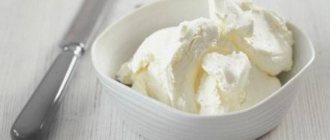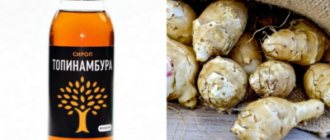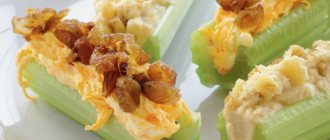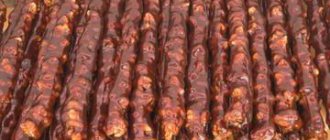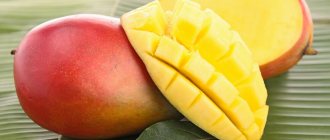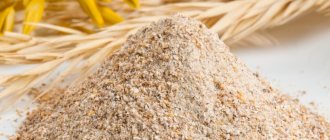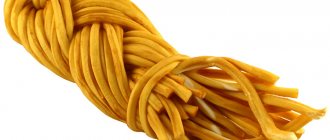Useful properties of papaya
The main enzyme of this fruit is the polypeptide papain. In structure and action, it resembles the enzyme pepsin, naturally produced by the digestive tract. Fresh papaya is therefore able to improve the digestion of a healthy person, and promote the digestion and absorption of “heavy” protein-rich dishes.
The papaya itself is often called the fruit of the melon tree, due to its similar shape. The fruit contains many seeds, and its weight sometimes reaches 6 kg, which only enhances the similarity. However, its chemical composition differs from cantaloupe and other types of melon. First of all, papaya contains more vitamins. Among them are vitamin A, E, C, D, and B vitamins. This composition explains the antioxidant properties of the fruit. In its natural form, it is often prescribed to those who want to improve the condition and appearance of their skin.
Papaya contains a fairly large amount of dietary fiber, and only 39 kcal per 100 g. Most of these calories, however, are “delivered” to us by carbohydrates. It is unknown where the information about the rich amino acid composition of papaya came from simply cannot be true - with 0.6 g of protein per 100 g of fruit, you will have to eat a whole kilogram to get a measly 6 g of pure protein.
Classical Russian dietology recommends limiting papaya if a person wants to lose weight. This is due to the fact that the fruit can stimulate the appetite. However, Western experts strongly recommend including the fruit in a diet, especially one rich in protein. Regular consumption of papaya will not only “cheer up” a person who is tired of bland dishes and losing weight, but will also help activate anti-catabolic processes in the muscles, which means preserving more muscle on a low-calorie diet. However, there is no “medical” amount of papaya for weight loss. Most often, 1200-1500 kcal diets contain 150-200 g of this fruit per day.
Dried papaya, when cooked in a dehydrator, contains all the beneficial properties of fresh papaya and is rich in vitamins. But the candied fruits of the melon tree, which we often see in confectionery departments, have nothing in common with healthy fruits except the name. To prepare them, papaya is boiled in sugar syrup, so the “sweets” do not provide anything other than fast glucose.
Application
Usually papaya is eaten fresh as an independent dish, peeled from seeds and peel, juiced from the pulp or added to salads. The softest but elastic fruits of a uniform yellow color are considered the sweetest. The pulp is also subjected to heat treatment - stewed, fried, made into porridge, baked over a fire.
Market Analytics
- COVID-19 is changing the rules of the game in the cosmetics market
- Beauty of the future: cosmetic innovations 2020
- New ingredients are the driving force of the cosmetics industry
Convenient search for beauty salons on our website
Beauty salons in Moscow Beauty salons in St. Petersburg Beauty salons in Ekaterinburg Beauty salons in Novosibirsk
Latest blog posts on our website
- Naturecream / Geranium (Pelargonium) oil for skin health and beauty
- Prostye-sovety / Save on a beauty salon: procedures that can be done at home
- Naturecream / Growth Factor - brings back youth?
- Oksana-Lezina / 3 effective abdominal exercises from a fitness instructor for beginners
- Prostye-sovety / Making perfect curls at home
- Prostye-sovety / Which hair removal method to choose
- Naturecream / Wrinkles Puppets
- Naturecream / PEPHA-TIGHT - instant skin lifting
- Naturecream / Blue light - a danger to the skin
- Naturecream / Cocoa Butter – A treat for the skin
Latest forum topics on our website
- Mrs._Smith / Badly sunburned! What to do?((
- Ice / Is it necessary to combine fitness classes with a diet?
- Antonova / What can be used for hair loss?
- Radio operatorKat / Who was on a protein diet?
- Suzanna / Mesotherapy on the face
Other articles in this section
| Black elderberry Elderberry is a perennial woody plant from the honeysuckle family and has the appearance of a shrub or small tree 3-7 m high. Elderberry grows mainly in central Russia. In early summer, fragrant cream or yellowish-white flowers bloom on the branches. By the beginning of autumn, the fruits ripen - small black-purple berries with a sweetish-sour taste. Being a medicinal plant, black elderberry has found its main use in medicine. |
| Star apple Star apple (star apple, caimito) is a tropical tree that bears round or oval-shaped fruits. On top they are covered with a thin green or purple skin with a characteristic shine, under which there is a dense inner crust 4-9 mm thick. Inside the fruit there is juicy sweet pulp with shiny black seeds. The color of the pulp depends on the color of the peel: green fruits have white flesh, while purple fruits have pinkish-purple flesh. On a cross section of the fruit, the seed chambers form a characteristic star-shaped pattern, which is where the name of the fruit comes from. |
| Apricot Apricot fruits have tender and juicy pulp, pleasant to the taste, perfectly quench thirst and hunger, and enrich the body with vitamins and microelements. The famous ancient scientist and healer Ibn Sina believed that apricots should definitely be in the diet of every woman, because eating these fruits gives the skin freshness and elasticity, strengthens hair and nails, and helps fight excess weight. |
| Passion fruit Passion fruits are round or oval in shape and, depending on the variety, yellow or purple in color. Its sweet and sour pulp is hidden under a thick shell and contains many seeds; it is very aromatic and juicy. The surface of the fruit can be smooth and shiny or rough with small cracks. The sweetest fruits are the large, wrinkled fruits with dark purple skin. |
| Cloudberry Cloudberry is a herbaceous plant and reaches a height of about 35 cm, found in peat bogs, swampy forests and tundra. During the flowering period in mid-summer, one snow-white flower blooms on each stem. By the beginning of autumn, the first harvest appears - quite large, juicy, sweet, amber-colored berries with a subtle amazing aroma. When unripe, cloudberry berries are red in color and resemble raspberries in appearance. Despite the fact that cloudberries are common in the polar-Arctic region, they do not like snow and do not tolerate frost well. Locals call cloudberries marsh amber, marsh guard, northern orange and moss currant. |
| Dogwood Dogwood is a large fruiting shrub that bears small oblong berries. Outside, the fruits are covered with a smooth skin of all shades of red: light, bright, dark and deep burgundy, almost purple, under which there is juicy sweet and sour pulp and a hard inedible pit. |
| Plum Plums have small round or oblong fruits with dense, fleshy, sweet and sour pulp and a hard, inedible pit. The color and chemical composition of the fruit depends on the variety; plums are yellow, green, red, blue and purple. At the same time, yellow fruits contain more vitamin C and vitamin E, and dark varieties contain anticyanins. Thanks to the work of breeders, there are many different varieties of plums; the following varieties are common in central Russia: sloe, domestic plum, Ussuri plum, damson plum and Chinese-American hybrids. |
| Chempedak Chempedak is adjacent to fruits such as jackfruit, durian, marang and has a similar structure and chemical composition of the pulp. Medium-sized fruits weighing from 1 to 5 kg have an elongated shape, growing about 40 cm in length and 15 cm in width. Ripe fruits have a yellow-brown skin and a rich, pleasant aroma. The pulp of cempedak is dark yellow or orange, tender, creamy in consistency, juicy and sweet, similar in taste to sweet dough. It consists of many lobes in which round bones are located. Chempedak contains almost no latex, only a small amount is found in the core and on the peel. |
| Hawthorn Hawthorn is widespread and can be found in the undergrowth, ravines, along river banks, and on the edges of forests. Hawthorn blooms in early summer, and the fruits ripen by autumn. Hawthorn berries are about 1 cm in diameter, round or oval, hard, wrinkled. The color of the fruit is yellow, orange, dark red, brown, sometimes with a whitish coating. There is no smell, the pulp is mealy, sweet and sour with hard seeds. Hawthorn is a medicinal plant and all its parts are used in folk medicine: fruits, leaves, bark and flowers. |
| Red currant Currently, there are 65 varieties of red currant. Unlike the black one, its bushes are taller and more compressed in width. Red currants are winter-hardy berry crops, but love light. It blooms in May-June with pale green flowers, the fruits ripen in mid-summer. Sour, small, bright red berries are collected in drooping clusters, on which they hold firmly, without falling off for a long time. |
Papaya oil
Natural papaya oil is obtained from the seeds of the melon fruit. They are pressed with a cold press, and the finished oil is poured into dark glass bottles without using preservatives. They are not needed. Thanks to papain in the composition, the product retains its properties without additional preservatives, and is considered an excellent antibacterial agent.
Papaya oil is not consumed as food; it can cause stomach upset due to its richness in papain and other enzymes. The product has astringent disinfectant properties. In folk medicine it is used as an analogue of a plaster and a means for disinfecting wounds. It is enough to lubricate the damaged skin with oil, and a film is formed through which pathogenic microorganisms cannot penetrate.
In cosmetology, papaya oil is used as a broad-spectrum agent:
- it is used to lubricate areas affected by acne; the oil is softer than tea tree essential oil, but is also capable of eliminating the causes of inflammatory processes;
- used as one of the components of complex rejuvenating and skin-tightening masks. Often, papaya oil is mixed with white clay or pureed bananas and avocados to nourish the skin with both vitamins and healthy fats;
- use a hair product to combat oily seborrhea of the scalp and eliminate increased secretion of sebum;
- it is used as a means to prevent fungal infections and diaper rash on the skin of the feet. Apply the oil overnight, put on socks, and simply leave it on the skin. In the morning the oil will be absorbed and there will be no unpleasant sensations.
Papaya oil is also included in anti-cellulite massage mixtures. Here it is used as a drainage and heating component. Many recipes combine small amounts of papaya oil with sesame and olive oils, as well as a few drops of citrus essential oils.
What are the benefits of candied fruits?
The product is a berry, vaguely similar in taste to melon. Also, they have almost the same composition as melon. There are both benefits and harms.
Beneficial properties include a large number of vitamins. More recently, scientists have discovered a substance called papain, which is similar to bromelain and promotes rapid weight loss.
The plant contains vitamin C, B vitamins, glucose, fructose and many other useful components. They are the ones that saturate the human body with vitamins. It is also rich in plant enzymes that easily cope with obesity. The digestion process begins to intensify. This way all toxins are eliminated.
When consumed, the body activates protein metabolism, lowers cholesterol levels, thins the blood, rejuvenates the skin, strengthens the protective barrier and improves the functioning of all systems and organs in the human body.
The benefits of candied papaya are reduced in dried form than in fresh form, but not significantly. In modern medicine it is used in the manufacture of diuretic and antibacterial drugs.
If consumed in candied form, you can get rid of pain due to joint and spinal diseases. The composition includes iron, which relieves a person from anemia. Often, doctors prescribe it to patients suffering from insomnia. But more benefits from berries come from the digestive process. It normalizes the gastrointestinal tract and fights extra pounds.
100 grams of product contains 327 kcal.
Compared to others, the calorie content is quite higher. Let's look at the table of calories per 100 grams: Calorie content of candied fruits
| Based | Calorie content, kcal |
| Pineapple | 91 |
| Papayas | 327 |
| Ginger | 106 |
| Melons | 319 |
| Mango | 286 |
| Kiwi | 238 |
| Pamela | 123 |
Papaya juice
Papaya juice is simply delicious and healthy. It contains the enzyme papain, which improves digestion and protein absorption. Nutritionists do not recommend juices only to those who have difficulty controlling portions. People trying to lose weight should limit what is easy to eat in large quantities. Juices are usually drunk like water, so this product should be limited.
Although you can find the opposite point of view on the Internet. Anyone looking to shed pounds should drink papaya juice as it burns fat. There is a substitution of concepts here. Improved digestion does not always mean that a particular food actually burns fat or changes metabolism. The enzymes in the juice only speed up the absorption of protein and make it easier for those people who are forced to eat a lot due to the specifics of their sports activities. Therefore, papaya juice can rather be called a drink for bodybuilders and powerlifters, and not for those losing weight.
Composition of papaya
Having figured out what this fruit is, we can safely move on to studying the composition. Thanks to the many beneficial substances and minerals that papaya contains, the product has a positive effect on the human body.
Since the fruit itself is an expensive pleasure, papaya is often sold dried. The price for 100 grams of the finished product is quite affordable, and everyone can please themselves with a tasty and healthy delicacy. In addition, such candied fruits can be used to make oatmeal, a quick snack of muesli, dried fruit and milk, and can also be used to replace tasty but far from healthy chocolate.
So, what is in this product:
- vitamins A and C, which are responsible for improving vision, skin and reducing the risk of developing cardiovascular diseases;
- folic acid;
- fiber, which cleanses the body of waste and toxins;
- magnesium;
- enzymes;
- glucose;
- fructose;
- organic acids;
- papain;
- chymopapain.
We will look at how many calories are in dried papaya a little later.
Many nutritionists strongly recommend not freezing fruit slices, but drying them. This way you do not kill beneficial substances, and the shelf life of the product itself is significantly increased.
In addition to cooking, this product is actively used in cosmetology. Often, papaya pulp is the main component of face masks. It is believed that this promotes rapid regeneration and restoration of the skin.
How to properly peel papaya and how to eat it
Usually papaya is not peeled, but cut. Those who prefer peeled cubes should do so with the fruit as with melon or watermelon. First, cut into pieces, then separate and clean each separately with a sharp knife.
The fruit is eaten fresh, in its “pure form,” or in the form of fruit puree, salad, and also as part of various complex dishes. It is believed that papaya should not be in contact with air for a long time; the pulp of the fruit can change its color and even taste as a result. The papaya is cut into 4 parts, and each slice is cut into cross sections and broken. And the fruit itself is eaten just like a melon, cutting the pulp from the peel with a knife or simply separating it with your hands.
Video on the topic:
The use of fruit in cosmetology
To create skin care cosmetics, papaya extract, pulp, and oil are used. The enzyme papain, isolated from the exotic fruit, is especially valued. How papaya will benefit the dermis:
- Fruit acids do an excellent job of treating pigmentation, skin damage, acne and post-acne.
- Increased skin tone.
- Normalization of skin water balance. Stable water balance (maintaining a constant level of hydration).
- Gentle cleansing of impurities, no risk of pore clogging.
- Whitening skin, creating radiant shine.
- Rejuvenating effect. Cream with papaya will help delay the appearance of unwanted wrinkles for a long time.
- Increasing the elasticity of the dermis.
- Removing toxins, poisons, pollution.
- Normalization of the sebaceous glands. The fruit will help cope with both enlarged pores and the constant need to wipe your face with something. Using and eating the fruit will provide a smooth, matte face without rashes or blemishes.
- Correction and removal of freckles.
You can improve the condition of not only your skin, but also your hair, “without leaving the cash register.” Papaya juice and oil nourishes hair, restores structure, restores shine, health and softness.
With the help of papaya, you can not only grow beautiful hair, but also get rid of it. Fruit enzymes are added to various hair removal products (creams, serums, foams, gels). The substance provides several positive effects at once:
- removal of unwanted vegetation;
- additional skin hydration;
- blocking the possibility of ingrown hairs;
- the maximum distance from the moment of appearance of new hairs. The enzyme weakens the hair and dulls the performance of the hair follicle.
Dried papaya
Finding truly dried papaya in our “areas” is a problem. What they give us for it is pieces of papaya boiled in sugar syrup. Evil tongues say that this is not always papaya - you can find almost well-sugared and flavored zucchini. But that’s not the point. People tend to be afraid of papaya with sugar, but there is no need to do this. You should simply perceive the product as candy, and not as the “alpha and omega” of a healthy diet. You can eat candy, in moderation, occasionally, but you shouldn't base your daily diet on it. That's all.
Recipes with papaya
Salad with papaya and seafood
200 g each of shrimp, mini octopus and papaya pulp, green leaf salad, any, a spoon of red balsamic vinegar, and a spoon of olive oil, a pinch of dried ginger and salt.
Boil the seafood, cool, cut the papaya into cubes, tear the salad with your hands, chop everything together and mix. Serve slightly cooled in the refrigerator.
Tropical ice cream cocktail
Banana, papaya, large red grapes, strawberries, mint, and 1-2 tablespoons of vanilla protein.
Freeze bananas until firm. Mix strawberries in a blender with protein and mint. Cut the grapes into halves. Grind the papaya into a puree. Chop the bananas too. Place in dessert glasses in layers - banana, papaya, strawberries, banana, garnish with grape halves.
Fruit soup puree
Regular pumpkin, 400 g, liter of water, 2 cups of coconut milk, papaya, pineapple, and red grapes to decorate the dish.
Boil pumpkin in a mixture of water and coconut milk. Grind together with the remaining water into a puree in a blender. Chop the remaining ingredients nicely and add them to each plate separately.
Use in cooking
Papaya recipe with milk jelly
We will need:
- papaya – 1 kg;
- milk (optimal fat content – 3.2%) – 400 ml;
- gelatin – 30 g;
- sugar (can be replaced with any sweetener) – 50 g.
Preparation
Prepare the papaya: cut the fruit lengthwise and scoop out the seeds with a tablespoon.
Advice: there is no need to remove the peel first. It can be easily removed after the dish is ready.
Soak the gelatin for 10 minutes at room temperature. Take a saucepan, pour in gelatin, milk, sugar/sweetener and keep on low heat. Stir the mixture constantly until the sugar and gelatin are completely dissolved. Pour the finished mixture into the peeled papaya (the jelly should be located in the cavity in which the fruit seeds were located). Wrap with cling film and place in the refrigerator for several hours until completely set. Remove the finished dessert from the refrigerator, cut into portioned slices, remove the skin with a knife and serve.
Duck recipe with honey and papaya
We will need:
- papaya – 650 g;
- chopped cilantro – 50 g;
- unrefined olive oil – 50 ml;
- vegetable oil – 20 ml;
- honey to taste - 4 tablespoons;
- duck (it is recommended to take the breast) – 4 pieces;
- sesame seeds (both roasted and raw) – 2 tablespoons;
- soy sauce without additives - 1 tablespoon;
- lemon juice – 1 tablespoon;
- lime juice – 1 tablespoon;
- lemon zest to taste.
Preparation
Take a duck breast and make several deep longitudinal cuts into the skin. Don’t get carried away with the cuts, 3-4 will be enough. Prepare a frying pan: put on fire, pour in a drop of vegetable oil, spread over the surface. Place the duck breast in the pan (skin side down) until golden brown.
Prepare the sauce: mix olive oil, lime and lemon juice, zest, soy sauce, honey, sesame seeds and cilantro. Peel the papaya, remove the seeds, cut into small cubes. Grate a smaller part of the fruit and mix with the prepared sauce.
Remove the duck from the pan, drain the duck fat (formed on the surface) and clean the kitchen utensils. Brush the sauce lightly over the browned duck and place it on the newly prepared plate. Now the duck needs to be placed skin side up. Fry until done, adding sauce as needed. Serve the finished breast with chopped papaya and your favorite side dish.
Harm of papaya
In modern Western dietetics, there is a widespread theory that the human digestive system is genetically configured to feed only those fruits, vegetables and fruits that grow in the area of his birth. The theory does not explain how to deal with emigrants and settlers, but it is the theory most often used to justify indigestion, stomach pain and other troubles after eating exotic fruits.
In fact, in order not to suffer from stomach pain after papaya, you should follow simple rules for eating tropical fruits:
- do not mix them with foods containing a lot of starch, including breakfast cereals, oatmeal, potatoes, and various muesli, as well as bread;
- try not to eat fruit salad, but take only one type of fruit per meal;
- Do not eat a new fruit on an empty stomach. It is best to combine papaya with protein dishes, and lean game, poultry and fish are safer here than cottage cheese and kefir;
- wash and peel the “sample” thoroughly; do not eat the fruit with the peel, as it may be chemically treated for better transportation.
Patients with gastritis of both types, colitis, gastroduodenitis, and other diseases of the digestive tract should not consume papaya. People with inflamed oral mucous membranes should also avoid papaya. After eating, you should floss and rinse your mouth to remove any fibers stuck between your teeth.
The fruit does not combine quite well with another supplier of plant enzymes - pineapple. You should not eat papaya with fresh milk either.
It is also possible to be allergic to the fruits themselves, or the artificial wax with which they are coated for transportation. Moreover, an allergic reaction can be confused with a common cold - most often, lovers of tropical fruits have swollen mucous membranes and are tormented by a runny nose. If you experience symptoms, see an allergist, and remember to consume tropical fruits in moderation.
Harm and contraindications of papaya
Since papaya is considered an exotic fruit, you should start your acquaintance with a small portion. The main contraindication for use is the presence of an individual allergy to this plant.
Possible harm:
- Poisoning. The content of carpain in fruits in small doses helps get rid of parasites, but in large quantities it can cause poisoning and stomach pain. For this reason, you should not overuse dishes with papaya.
- Decreased reproductive function. Such harm can be caused not by the pulp, but by the seeds of this fruit. They reduce sperm activity for some time, which prevents natural conception. This effect gradually goes away 48–72 hours after eating the grains.
- Contractions of the uterus. When pregnant women consume unripe papaya fruits, the tone of the uterus may increase, which negatively affects the gestation period.
- Yellowing of the skin. A similar effect can occur with a significant overdose of freshly squeezed papaya juice or pulp.
In the absence of contraindications and moderate addition to food, papaya is absolutely safe for people of any age. Such a product can diversify the usual menu and become a tasty and healthy addition to many dishes.
Expert opinion
Veronica Sasina @dietolog_vs
Dietician, nutritionist-consultant, Rostov-on-Don
“Very tasty and juicy tropical fruit.
Papaya contains many vitamins and elements beneficial to our body.
So, let's take a closer look at what kind of vitamins these are?
- Vitamins of group A, C, D.
- The fruit is useful for people suffering from gastrointestinal diseases. Papaya has a lot of fiber, which has a beneficial effect on the intestines, and the fruit also neutralizes excess acid in the body, so it is very useful for people suffering from ulcers or erosion of the stomach and duodenum, and relieves heartburn.
- It contains the enzyme papain, which promotes the breakdown of protein, so if you additionally use enzymes in the form of medications, then it is better to try papaya.
- Contains potassium and magnesium, which are beneficial for those suffering from diseases of the cardiovascular system.
- Normalizes liver function and blood sugar levels.
The beneficial properties of papaya can be listed endlessly. The fruit is used in medicine to treat burns and in cosmetology to remove freckles.
But you need to choose the right papaya. The fruit should be ripe, medium soft to the touch and have a smooth skin.
In rare cases, individual intolerance to the product occurs. And in unripe fruits there is an alkaloid that causes irritation of the skin and causes poisoning. This alkaloid is called caripaine and is considered a toxic substance.
So choose ripe and bright fruits, and everything will be fine!”
Vitamins and minerals found in papaya
Vitamins:
beta-carotene – 0.276 mg, A – 55 mcg, B1 – 0.027 mg, B2 – 0.032 mg, B5 – 0.218 mg, B6 – 0.019 mg, B9 – 38 mcg, C – 61.8 mg, E – 0.73 mg , K – 2.6 mcg, PP – 0.338 mg, choline – 6.1 mg.
Minerals:
calcium – 24 mg, magnesium – 10 mg, sodium – 3 mg, potassium – 257 mg, phosphorus – 5 mg, iron – 0.1 mg, zinc – 0.07 mg, copper – 16 mcg, manganese – 0.011 mg, selenium – 0.6 mcg.
Read useful information about other fruits:
Peach Apricot Pomegranate Mango Nectarine Durian Pear
Chemical composition and calorie content of papaya
100 g of pulp contains:
- 0.5 g protein (0.61% of normal),
- 0.3 g fat (0.46% of normal),
- 10.8 g carbohydrates (8.44% of normal),
- 1.7 g dietary fiber (8.5% of normal),
- 88.06 g of water (3.44% of normal).
The calorie content of papaya per 100 grams is 43 kcal.
As can be seen from the composition, the content of healthy carbohydrates is overwhelming: per 1 g of protein there are 0.6 g of fat and 21.6 g of carbohydrates. This information will help you find out whether the product meets a person's nutritional requirements or dietary requirements.
Comment! According to the recommendations of the Russian Ministry of Health, to maintain a normal level of health, a person needs to get 10–12% of calories from proteins, 30% from fats, 58–60% from carbohydrates.
- Healthy vitamin C is present in large quantities. Its share in relation to other vitamins in 100 g of product can reach up to 68 g.
- Next comes vitamin B4, which contains 6.1 mg per 100 g.
- In addition, there are vitamins A, B1, B2, B5, B6, B9, E, K, PP, as well as lycopene and lutein.
As for useful macro- and microelements, papaya contains the most potassium (182 mg per 100 g), magnesium (21 mg), calcium (20 mg), phosphorus (10 mg) and sodium (8 mg). In addition to them, there is copper, manganese, selenium, iron and zinc.
